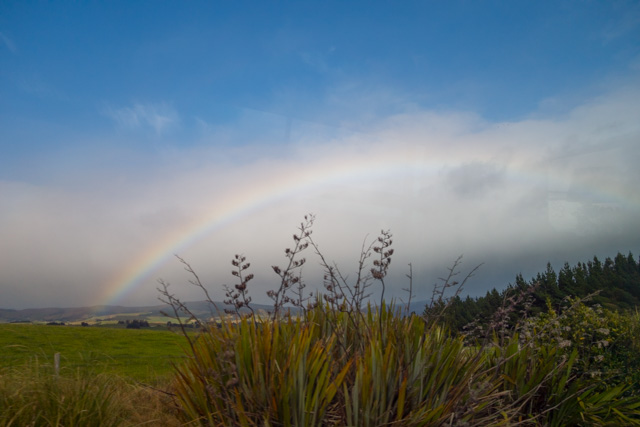
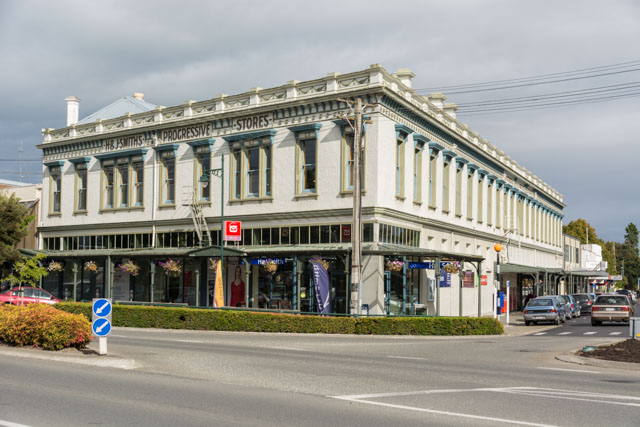
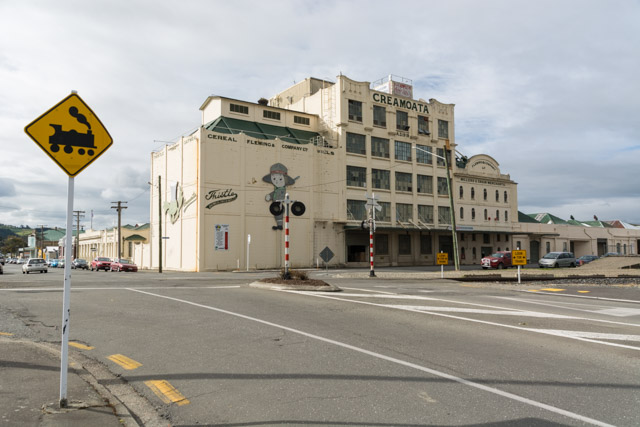
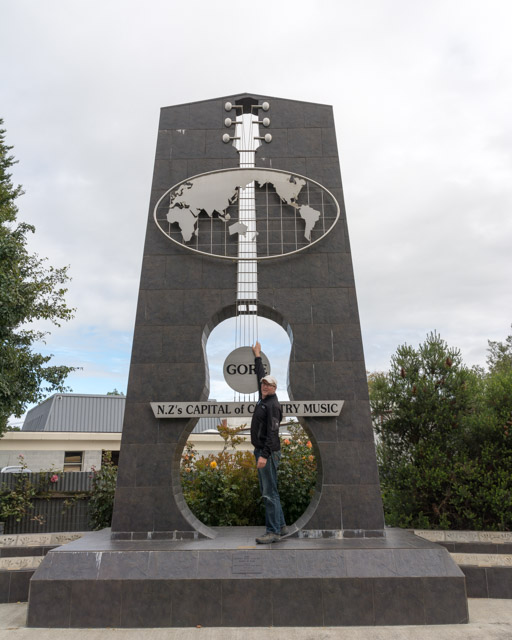
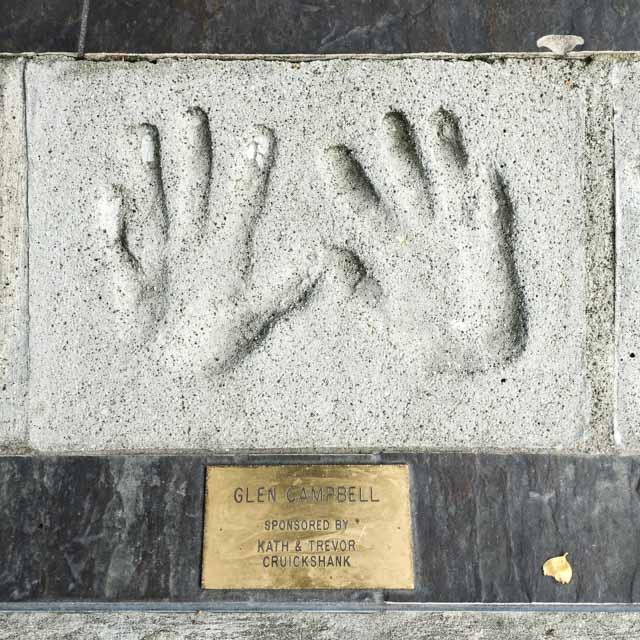
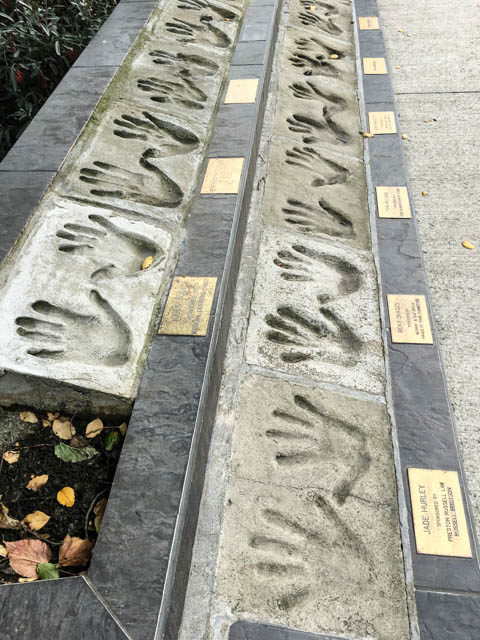
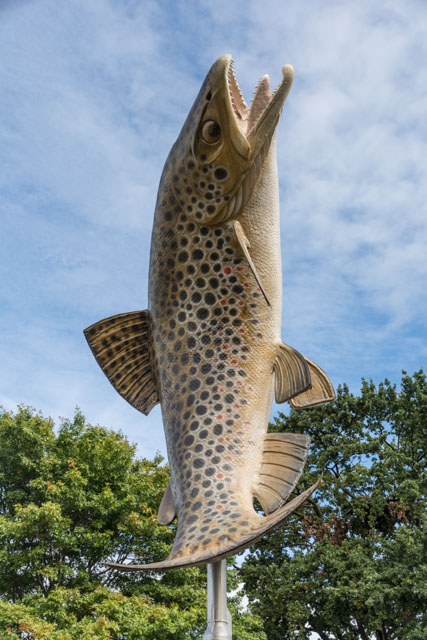
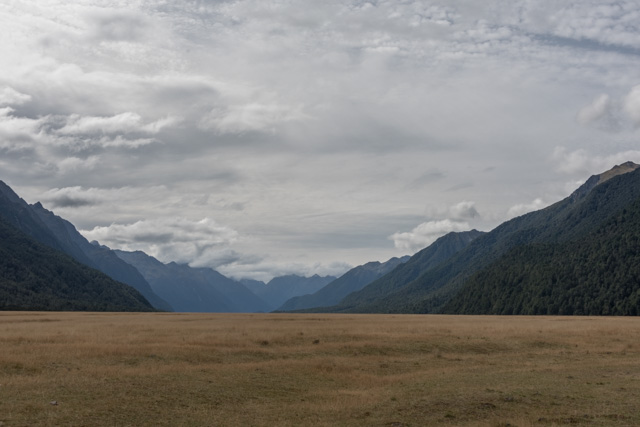
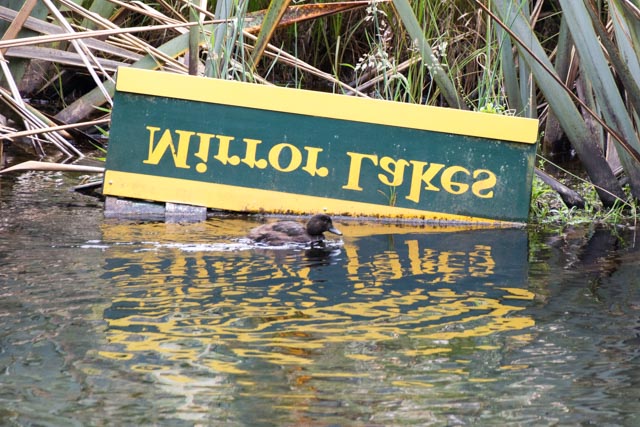
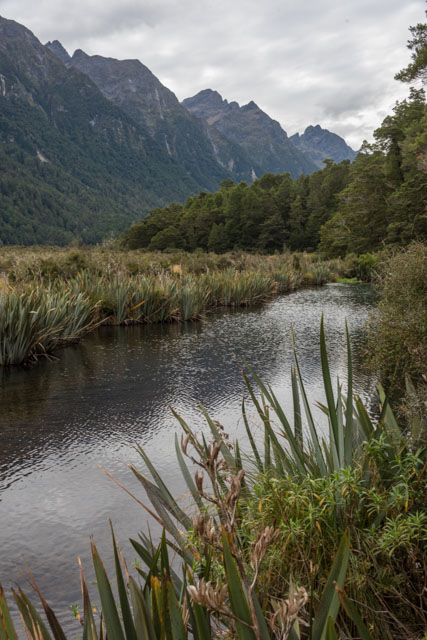
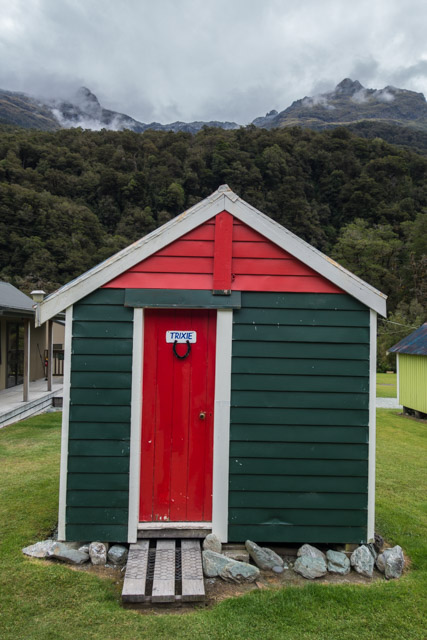
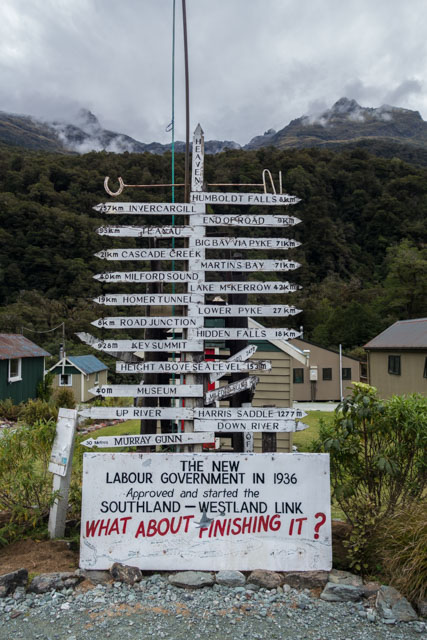
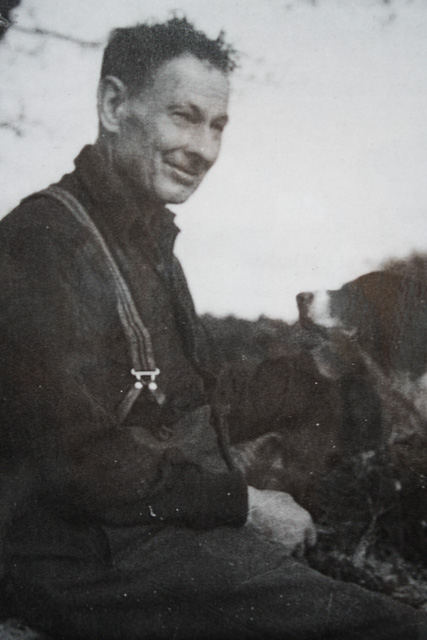
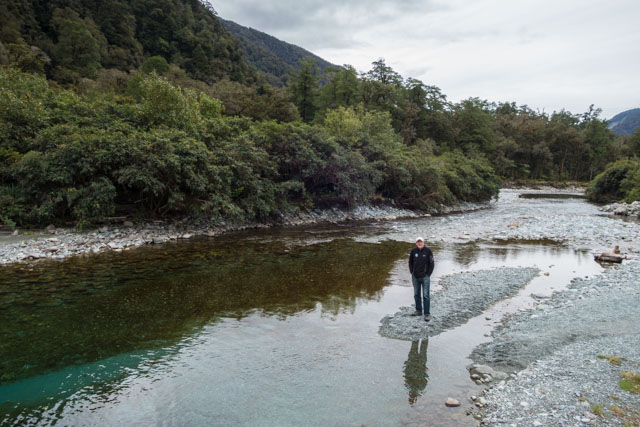
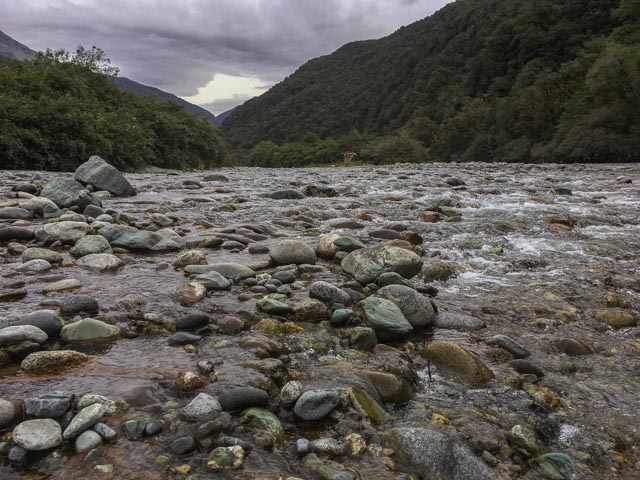
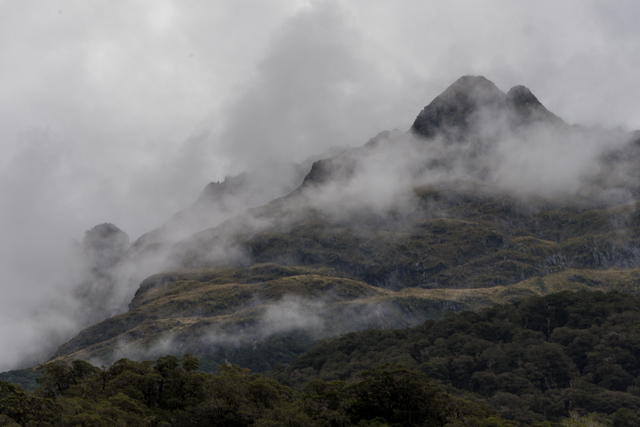
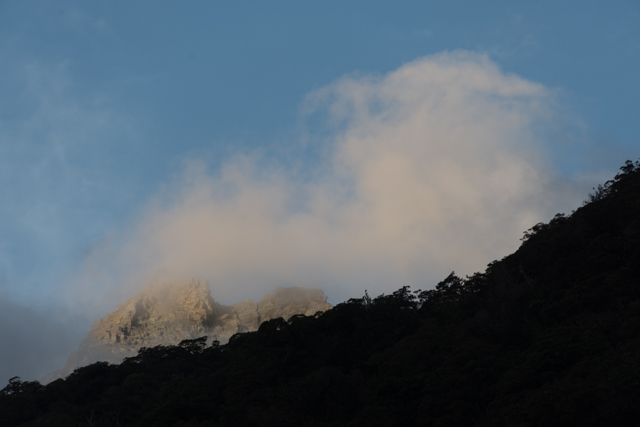
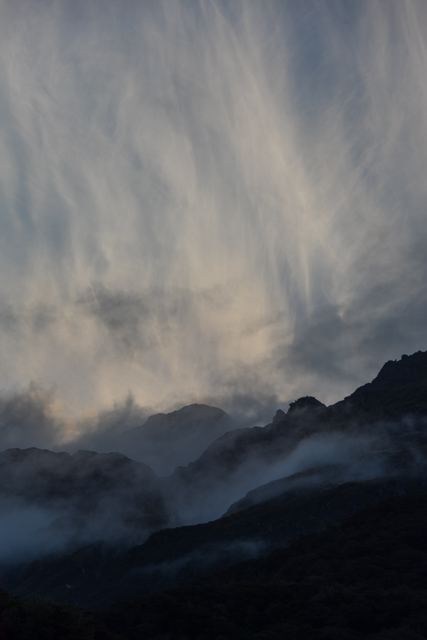
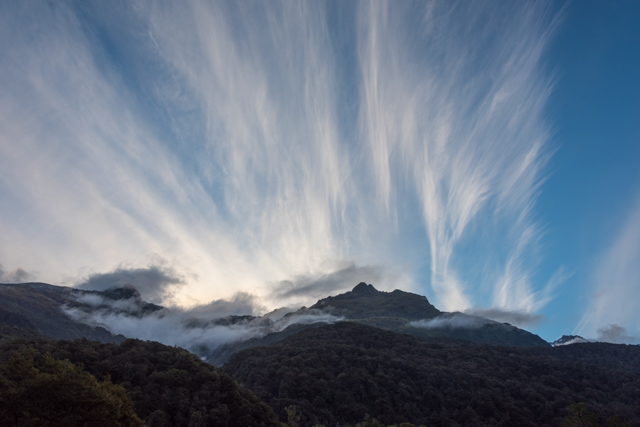
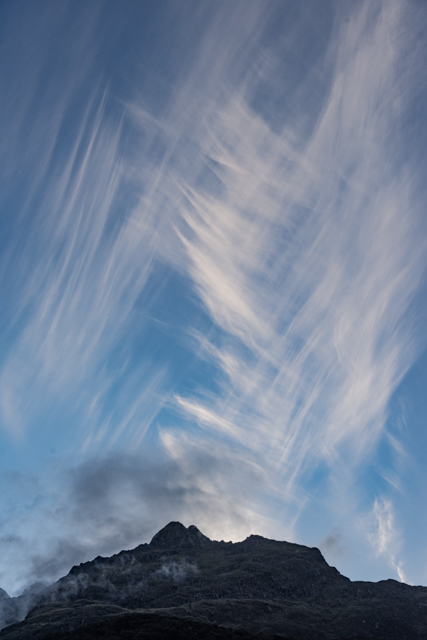
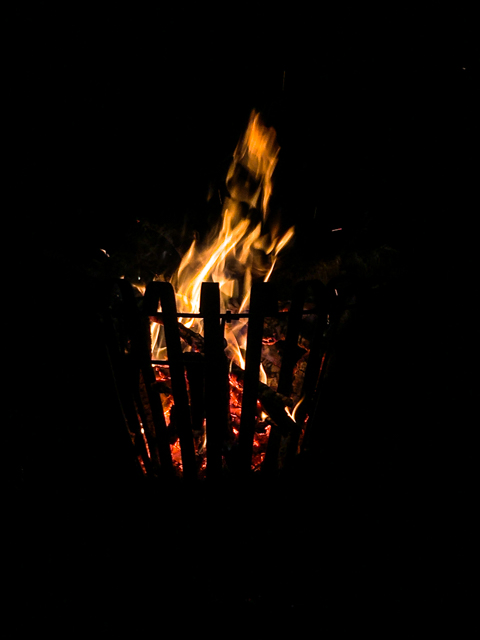
Relatively late start this morning before our long drive across the south to Fjordlands. The drive south of Dunedin passed through the edge of the Catlins, a scenic area of rugged coastlines and forests in the far south east of the country.
First stop was what our Central American guides called a technical stop – fuel & toilets. We were warned off the service station coffee.
First proper stop of the day was the town of Gore. This is the country music capital of New Zealand, which tells you most of what you need to know. The broad main street has a number of small local shops and what looks like a former department store, which must once have been quite grand. The biggest building in town by a long way is a former cereal factory. Gore is the ‘The World Capital of Brown Trout Fishing‘, the shops have signs such as Goregeous clothes for sale. We bought our usual flat whites and walked the high street in search of some lunch, nothing looked very good – I asked one bakery if they had anything vegetarian, he pointed me to a corn fritter sandwich that looked like it should be in a museum. We made do with hummus and pitta bread from the Countdown supermarket. On the way back to the bus we passed the Country Music hall of fame. This has hand prints from a lot of local musicians as well better known artists like Ricky Skaggs and Glen Campbell. Back on the bus we listened to Wichita Lineman in honour of Mr Campbell.
As we drove west – a country line if ever I heard one – the hills got bigger and some snowy peaks appeared in the distance. We stopped in Te Anau at the Fjordlands Visitors Centre to sign the three people from our group onto the Routeburn trek they’re starting tomorrow. The sun was now shining so I bought an ice cream.
The drive onwards from Te Anau into Fjordlands brought more scenery that increased in grandeur the further we drove. We stopped at the Eglinton Valley Viewpoint to look down the valley into the mountains beyond. A few minutes later, we had a look at Mirror Lakes, which was too breezy to be mirrored, and was more of a pond than a lake.
After an hour or so we crossed The Divide which is the watershed between the rivers that flow east towards Queenstown and west towards the sea. Our campsite was about 5 miles up a small road that goes nowhere. When it was started in the 1930s it was planned to cross the mountains to the east but the money ran out and the war intervened and after that it was never restarted, it stops a few miles further on, quite literally in the middle of nowhere.
The campsite is named after Davey Gunn, a dashing adventurer who lived here in the 1930s. He walked out on his family in Dunedin to start raising cows; he also had a sideline in taking visitors into the wilderness. Gunn called the area the ‘Land of doing without’. On one trip he saw a plane crash in the hills nearby. He walked, rode and kayaked for 22 hours to get help then returned to get the walkers. He eventually died trying to save a 12-year-old boy who was thrown into a river by his horse, the boy’s body was found but Gunn’s never was.
The campsite is in a deep valley with a river running nearby and high peaks on either side; they were just catching the last of the sun as we had dinner. We ended the evening round a fire hearing stories of previous trips from Simon our driver, a bit of an adventurer himself.

Loving those wacky cloud formations. The road to nowhere can’t have been such a great idea in the first place if it’s stayed the same for 80 years. According to my dentist the way in which you can tell whether an antipodean is from New Zealand, instead of Australia, is if they pronounce Six as “sucks”
Your dentist is right – New Zealanders love to mangle their vowels
Trout and country music. So much to celebrate.